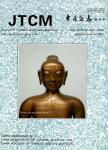In vivo antiplasmodial activity of Bombax buonopozense root bark aqueous extract in mice infected by Plasmodium berghei
In vivo antiplasmodial activity of Bombax buonopozense root bark aqueous extract in mice infected by Plasmodium berghei作者机构:Department of Pharmacology and Therapeutics Faculty of Medicine Ebonyi State UniversityAbakaliki P.M.B. 053 Nigeria Department of PaediatricsFaculty of Medicine Ebonyi State University Abakaliki RM.B.053 Nigeria Department of Pharmacology College of Medical Sciences University of Calabar Calabar P.M.B. 1115 Nigeria Department of Pharmacology and Therapeutics College of Health Sciences Nnamdi Azikiwe University Awka P.M.B. 5025 Nigeria Department of Physiology College of Medicine University of Nigeria Enugu P.M.B. 1011 Nigeria
出 版 物:《Journal of Traditional Chinese Medicine》 (中医杂志(英文版))
年 卷 期:2017年第37卷第4期
页 面:431-435页
核心收录:
学科分类:1008[医学-中药学(可授医学、理学学位)] 1007[医学-药学(可授医学、理学学位)] 1006[医学-中西医结合] 1005[医学-中医学] 1002[医学-临床医学] 100602[医学-中西医结合临床] 10[医学]
基 金:The Authors would like to acknowledge Mr.Simon Eze Nwibo and Mr.Christian Chibueze Nwonu of Department of Pharmacology and Therapeutics Faculty of Medicine Ebonyi State University Abakaliki P.M.B.053 Nigeria for their technical assistance
主 题:寄生虫感染 水提取物 疟原虫 根皮 木棉 体内 小鼠 急性毒性
摘 要:OBJECTIVE: To evaluate the in vivo antiplasmodial activity and the oral acute toxicity of the Bombax buonopozense root bark aqueous ***: The in vivo antiplasmodial activity of the root bark aqueous extract of Bombax buonopozense against early and established rodent malaria infections in chloroquine sensitive Plasmodium berghei strain in mice was investigated, and oral acute toxicity of the aqueous root bark extract of Bombax buonopozense was also evaluated in ***: The findings of this study revealed significant(P 0.05) and dose dependent decrease in parasitaemia in the parasitized groups treated with varying doses of the extract(50-200 mg/kg p.o.) in both suppressive and curative tests. There was also significant decrease in parasitaemia density in the chloroquine treated group. The aqueous extract was found no toxicity in mice and the oral LD50 was determined to be greater than 5000 mg/***: Bombax buonopozense root bark aqueous extract possesses potent antiplasmodial activity and may therefore, serve as potential sources of new antimalarial agents.



